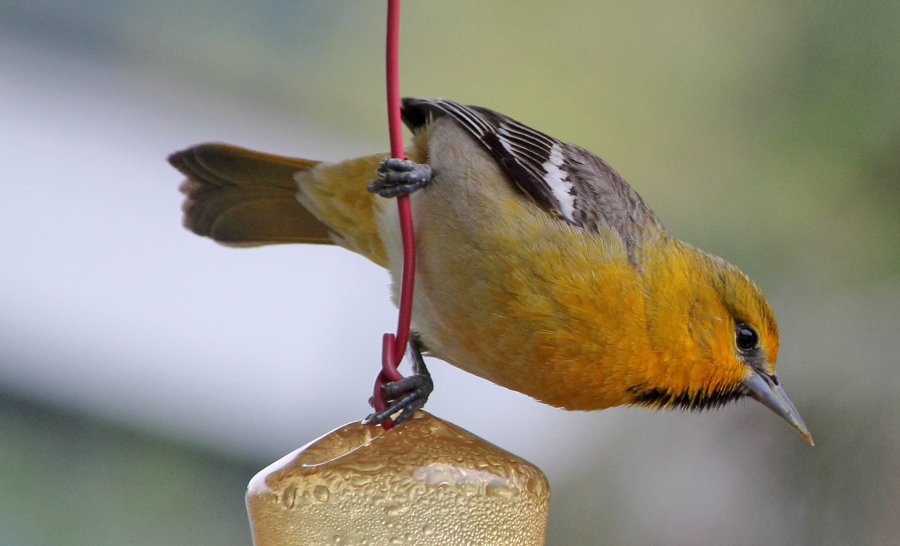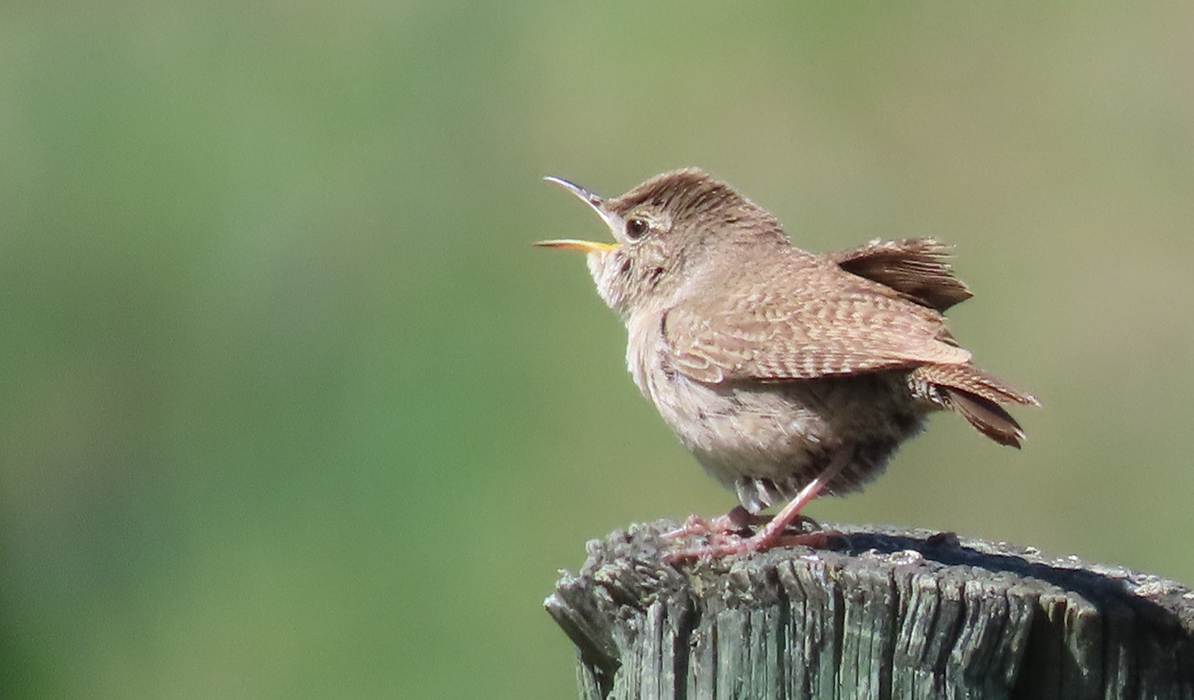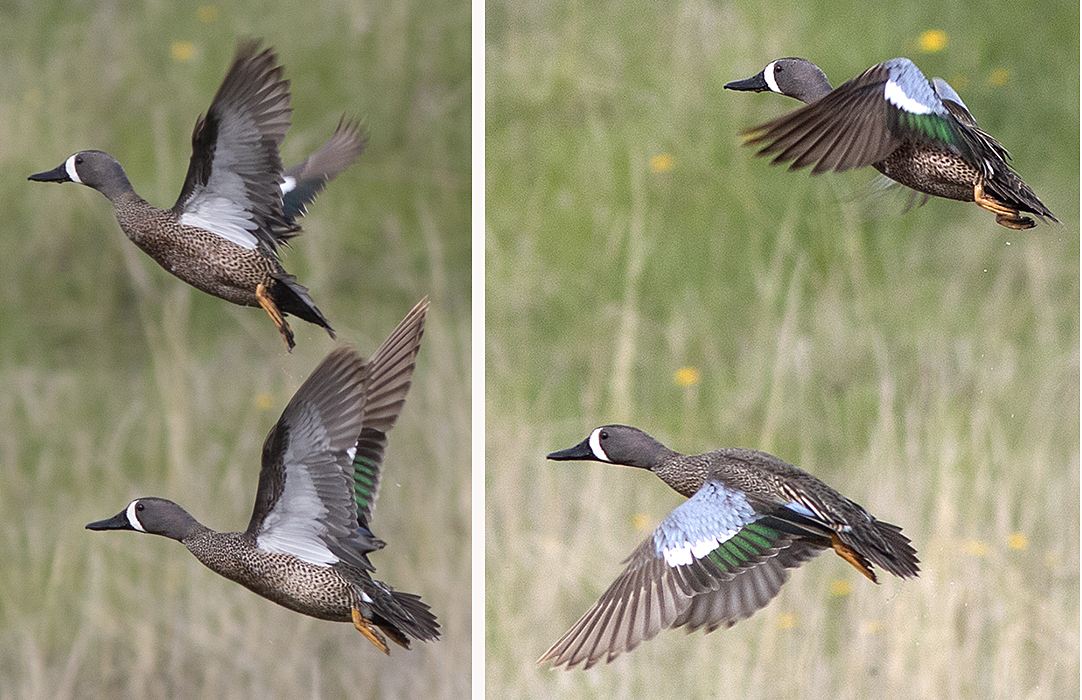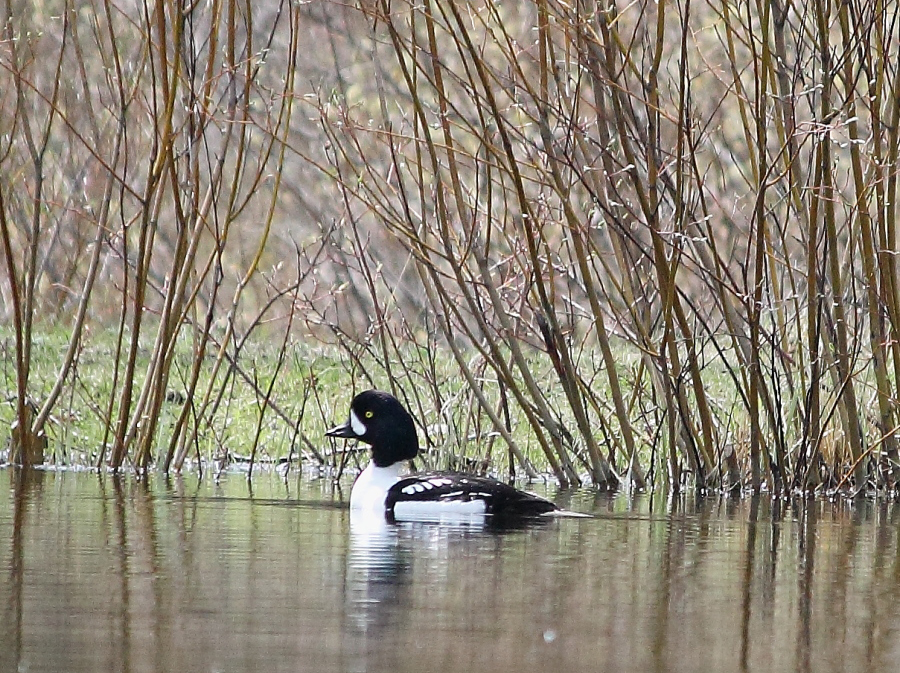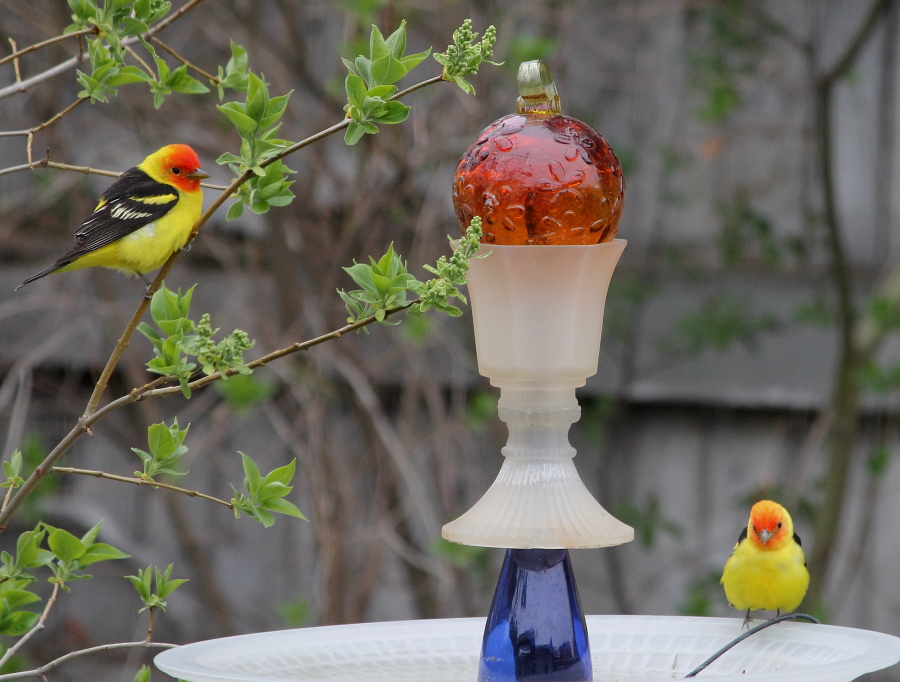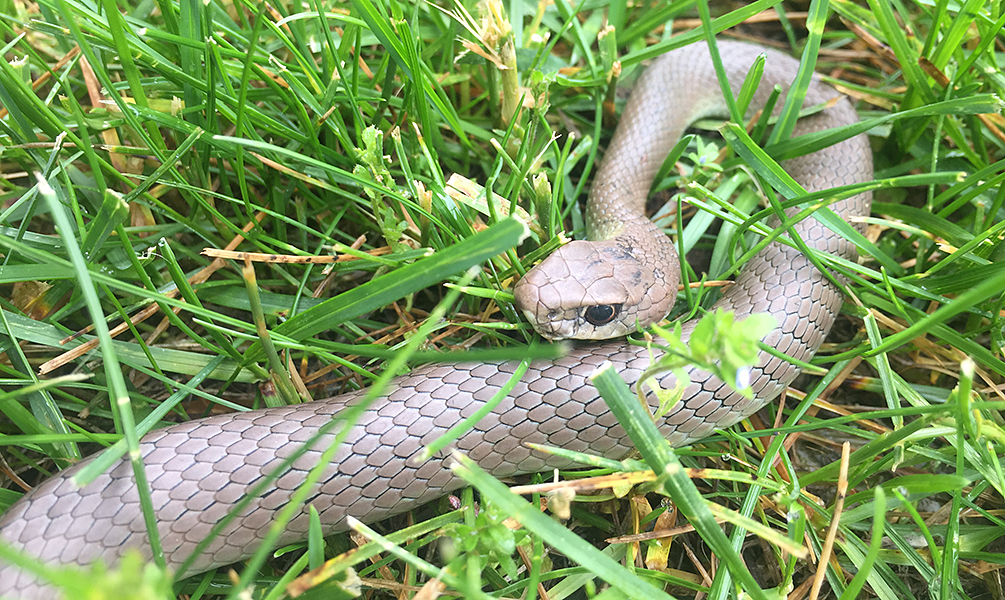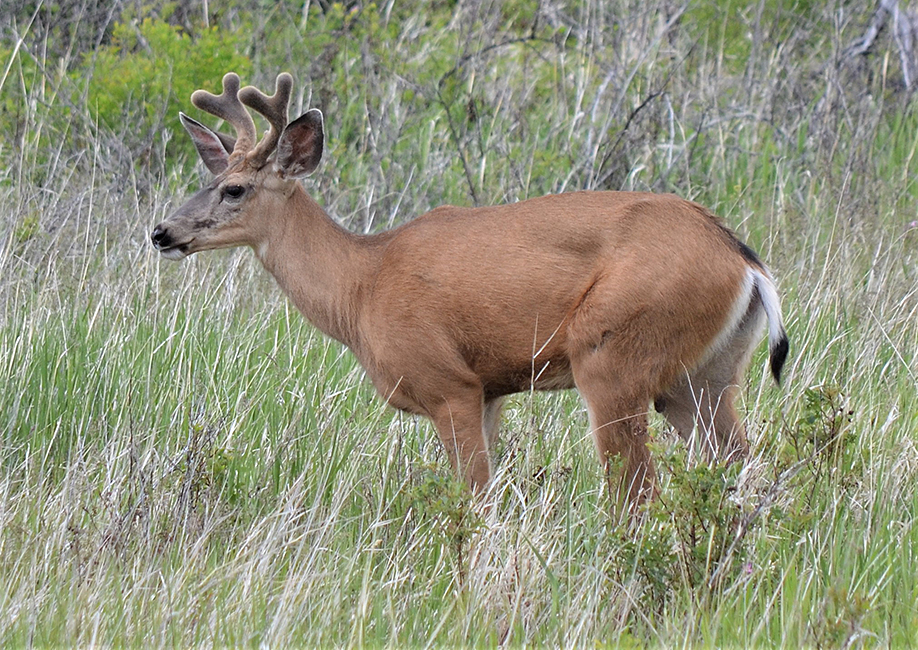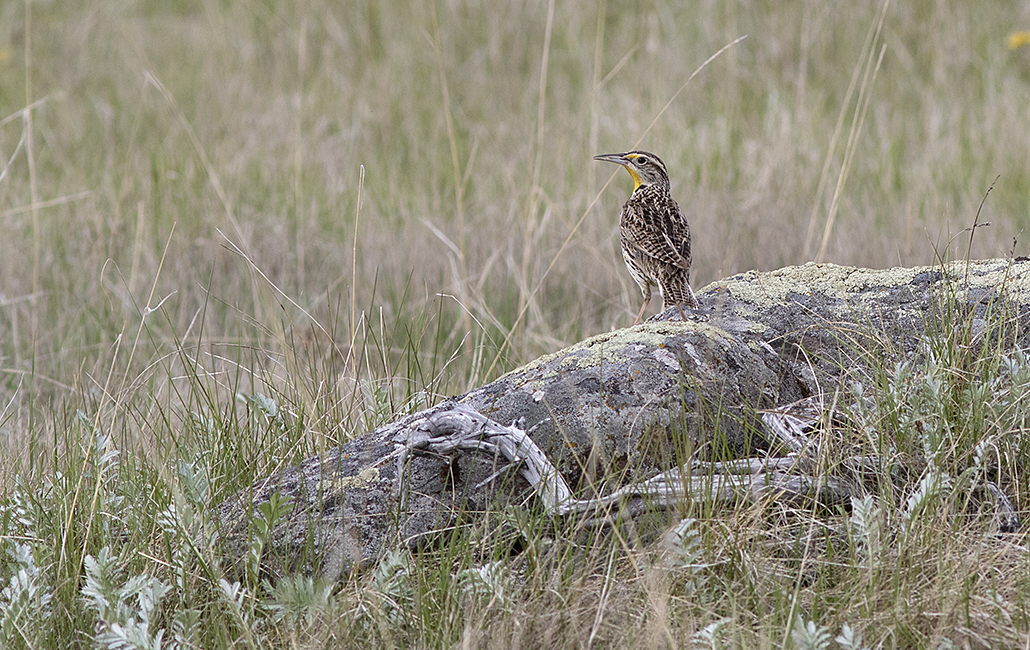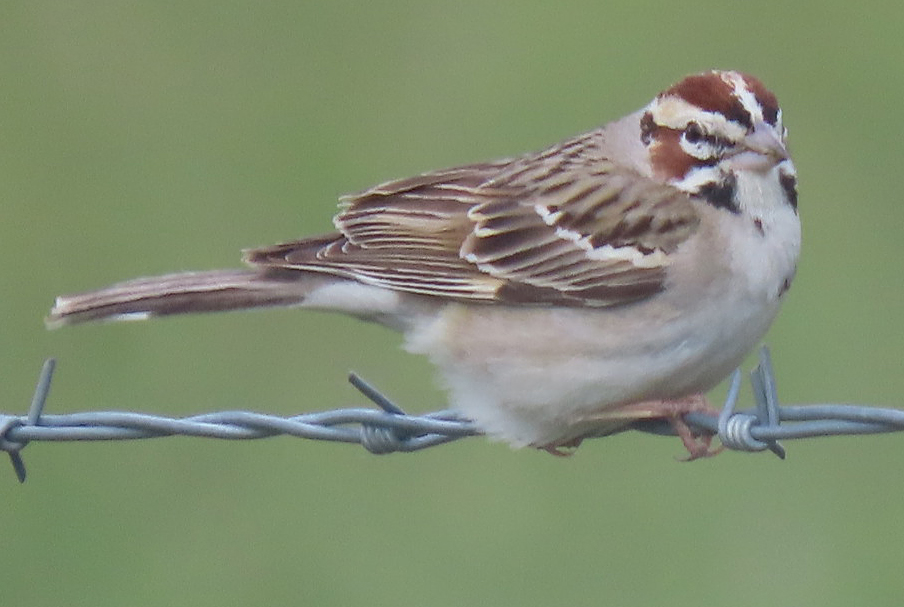June 15, 2020. This might be last in our series of virtual spring outings. With the relaxation of some of the COVID restrictions we are going to try a real outing on Saturday June 20th (members have received an email on the details) – well spaced of course.
To see the previous four Spring 2020 virtual outings click here: Photo Gallery
We have a bumper crop of great photos submitted by Nicola Naturalist Society members. Thanks to all the photographers who contributed pictures.
We’ll start with spring flowers – now is a great time to get out with your camera and wildflower guide to enjoy our native flora.
Murphy Shewchuck originally sent this image as part of a really splendid video, but unfortunately our website has restrictions on the size of file we an upload so we couldn’t share his video at this time. But this image gives you an idea of the glorious wildflowers – in this case at Hill’s Homestead, Kane Valley.
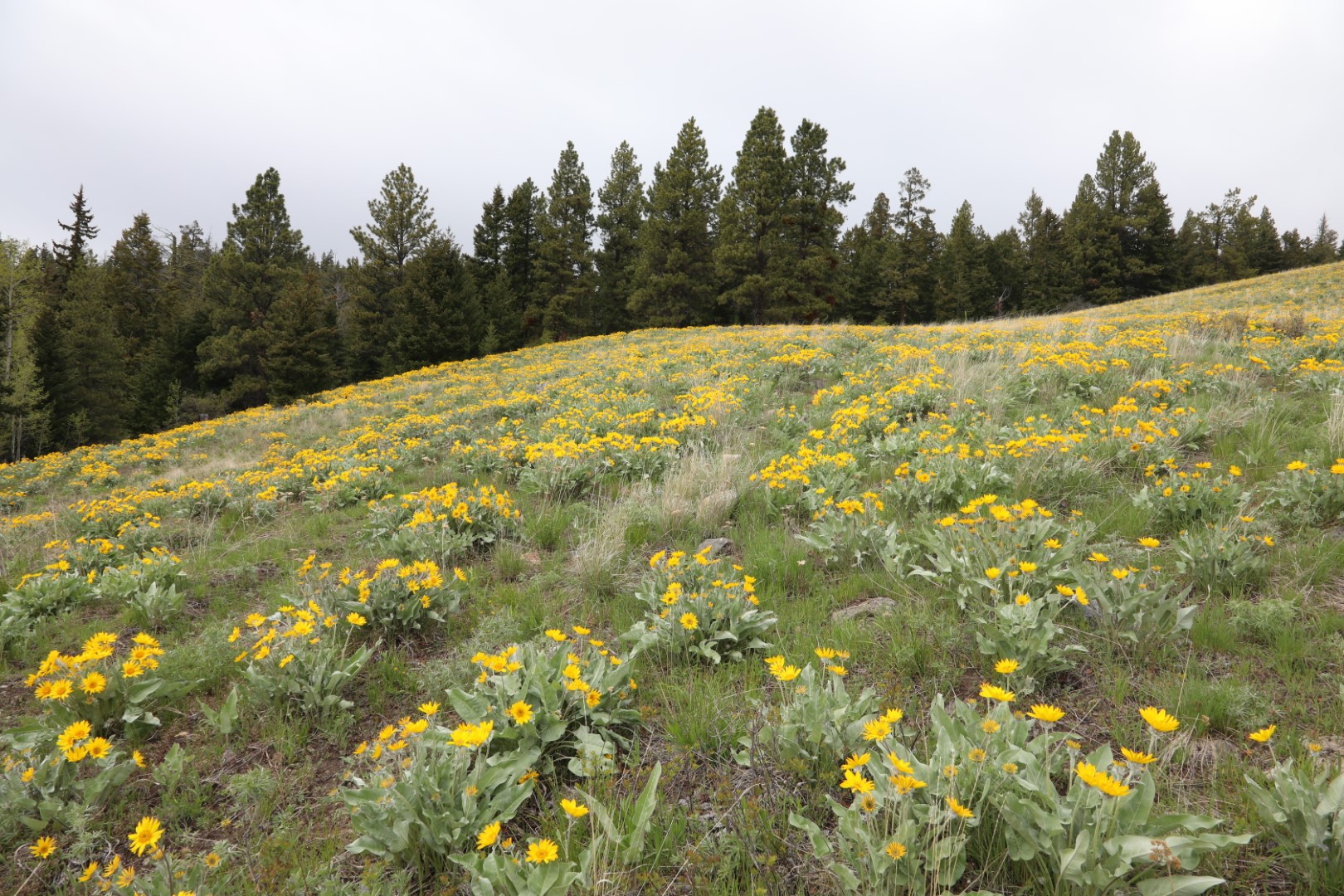
A colourful vista of flowering Arrow-leaved Balsamroot on Hill’s Homestead, Kane Valley. Photo: ©Murphy Shewchuk.
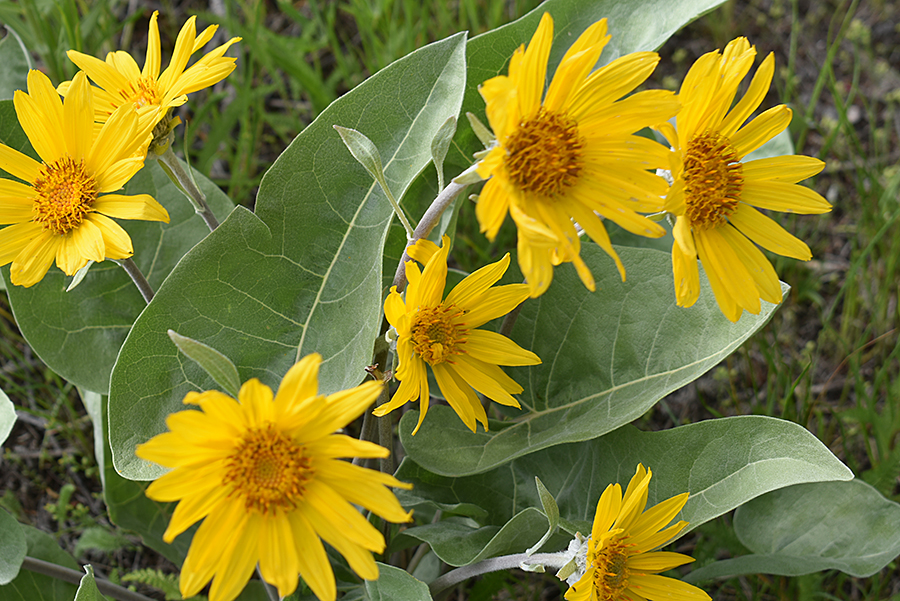
A close-up of the Arrow-leaved Balsamroot (Balsamorhiza sagitata). All parts of this showy plant are edible – leaves and roots were commonly eaten by local Indigenous people. Photo: ©Martin Ince
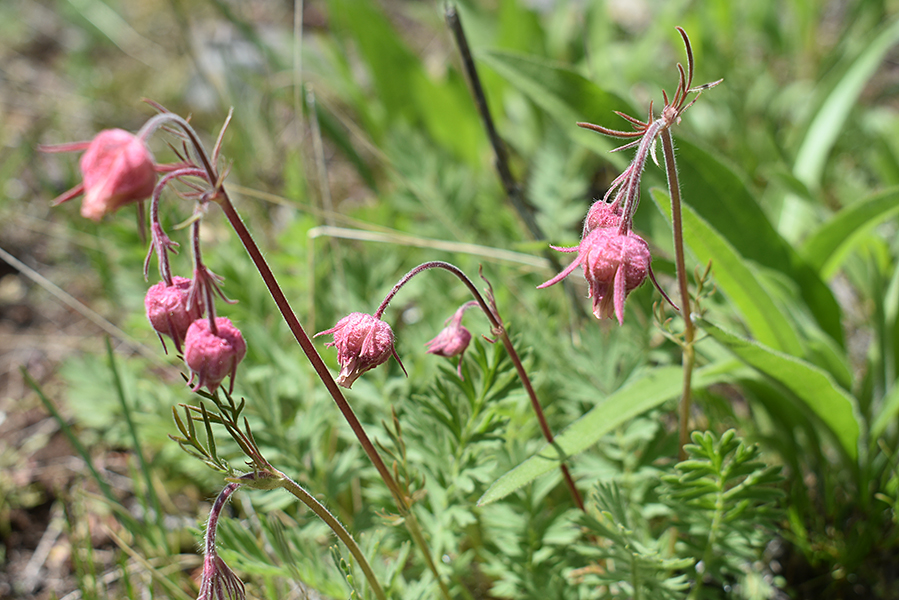
Old Man’s Whiskers (Geum triflorum), a widespread plant in our area. The feathery clusters of seeds which follow flowering give it the English name – look out for those later in the summer. Photo: ©Martin Ince
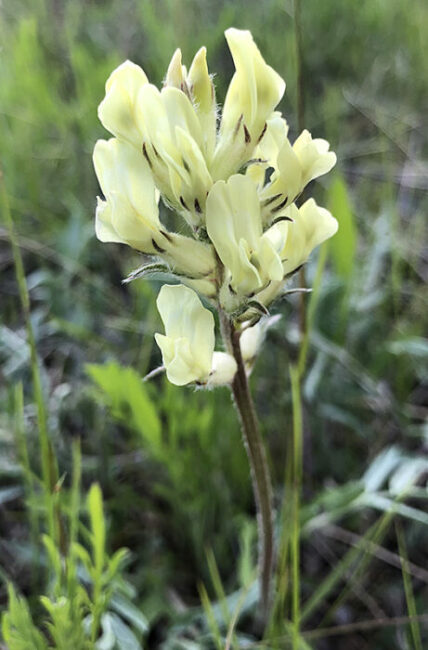
Field Locoweed (Oxytropis campestris). This low-growing plant is called Locoweed because its leaves are toxic and cause cattle to lose muscle control and stagger. Photo: ©Alan Burger
Birds are always our most photographed wildlife, and with good reason – they are diverse, common and colourful.
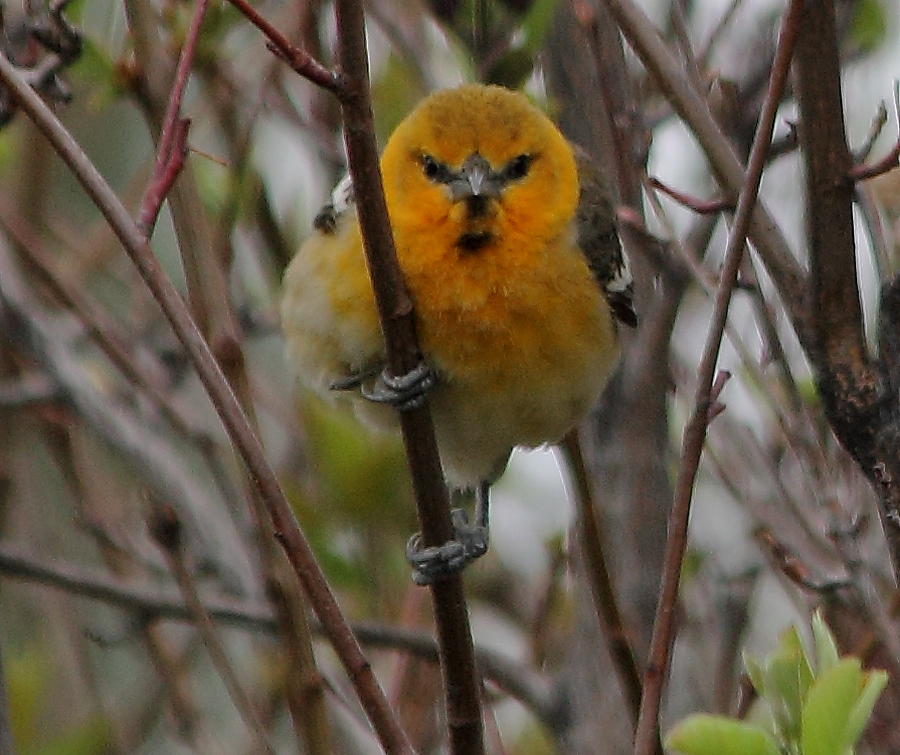
Angry bird!? Birds don’t really have facial expressions – we just interpret the markings that way. A Bullock’s Oriole – one of our more tropical-looking summer visitors. Photo: ©Cindilla Trent
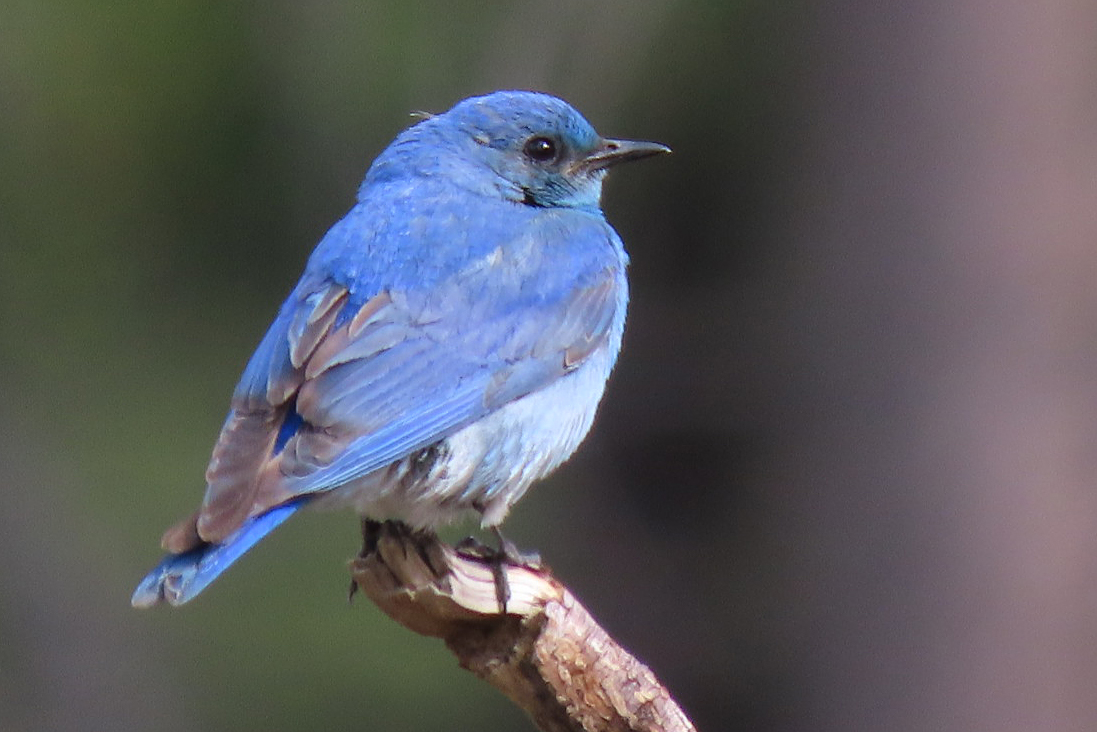
The intense blue of a Mountain Bluebird is one of the loveliest sights in our spring and summer. Photo: ©Vic Newton
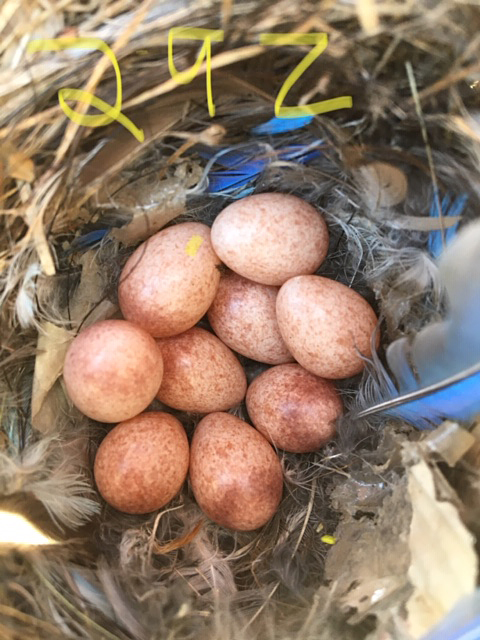
An impressive clutch of House Wren eggs. These birds often use nest boxes put out for bluebirds. In this case the wren has also incorporated a few bluebird feathers in the nest. Photo: ©Vic Newton
We’re having a wet rainy spring this year so there are many ponds full or overflowing – a good year for ducks!
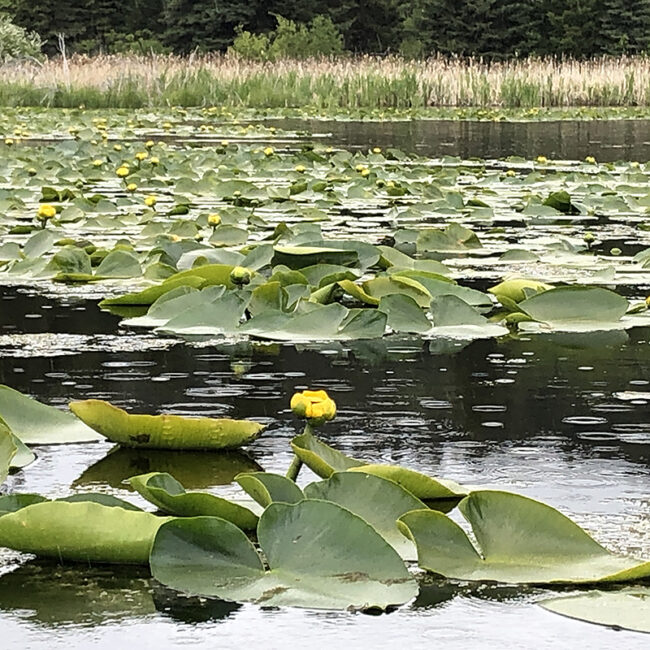
With a wet rainy spring our ponds are overflowing. Yellow Waterlilies (Nuphar polysepalum) are common in many shallow ponds and lake edges. Photo: ©Shelley Cressy-Hassel
One thing you will notice in mid-June is that most of the ducks you see (and most of the photos submitted) are of males. This is because in ducks (but not geese or swans) the males play no part in incubating the eggs and raising the ducklings. Their job is done once they have mated with the female and she goes off to look after the eggs. So the males can hang out with the other boys or head off to some safe moulting site.
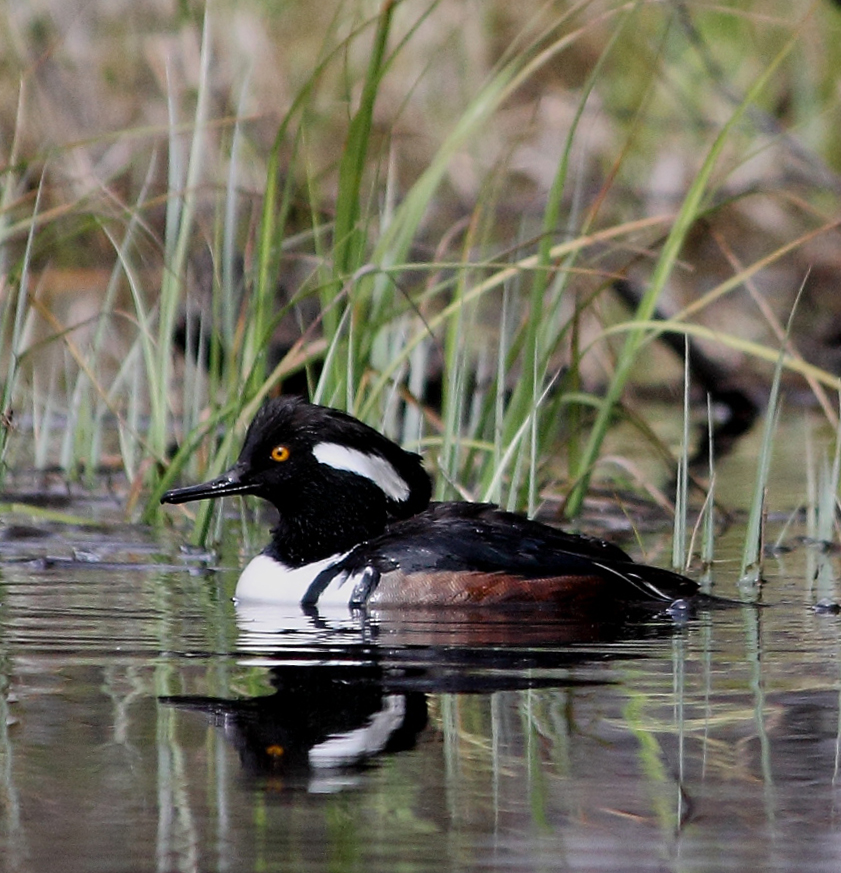
A male Hooded Merganser. In this photo the hood is flattened but during courtship the hood (head crest) is raised to enhance the male’s display. Photo: ©Cindilla Trent
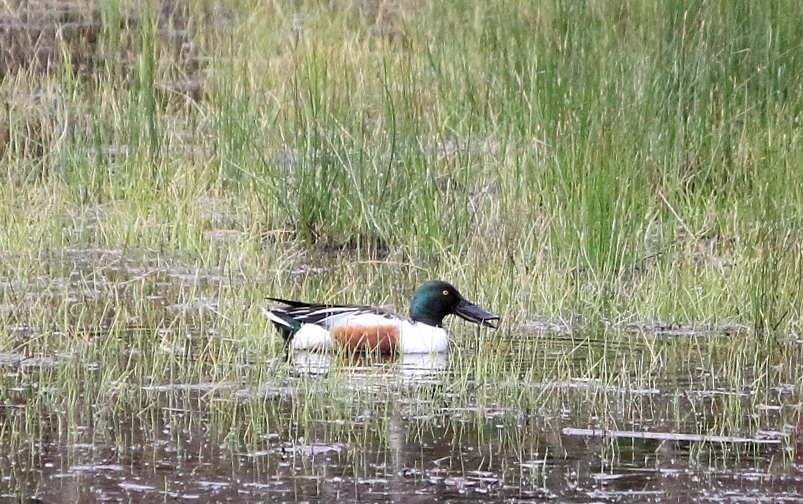
A male Northern Shoveler – this species wins the prize for the biggest snoz in our neighbourhood. Photo: ©Cindilla Trent
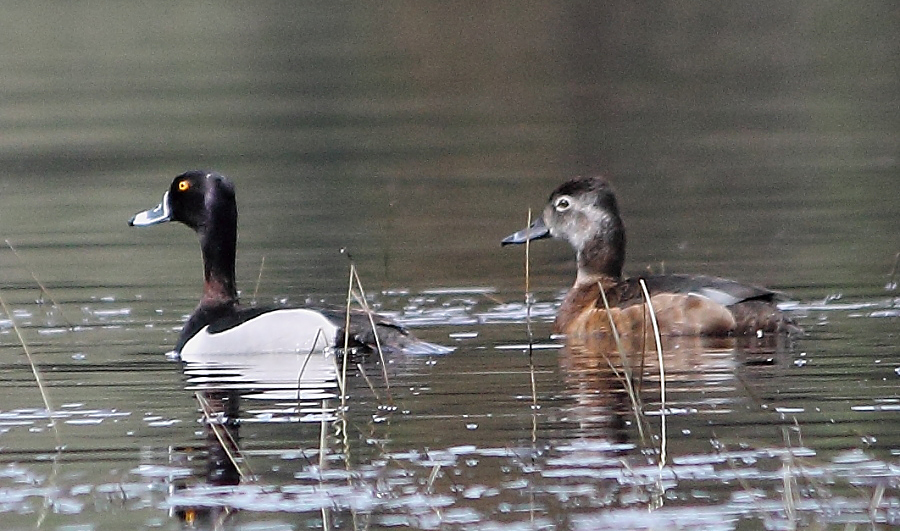
Ring-necked Ducks (male left, female right) can be found in our area for most of the year as long as there is open water for them to feed in. They dive to find insect food in the bottom of shallow ponds and lakes. Photo: ©Cindilla Trent
Spring and early summer are the best times to look for butterflies and other insects. This is a good time to brush up on your identifications with our two online butterfly and moth guides:
More butterflies and moths of the Merritt area
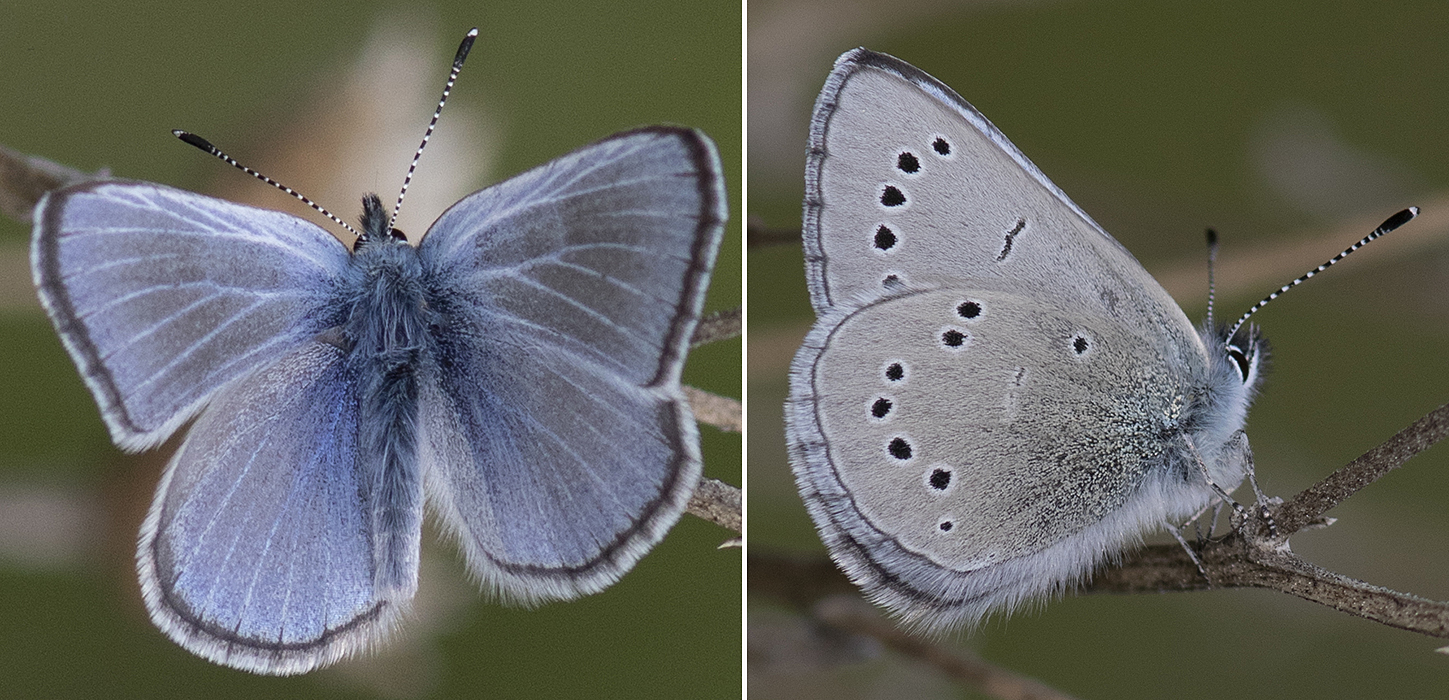
A Silvery Blue butterfly (Glaucopsyche lygdamus) at Tunkwa Provincial Park. There are several Blue butterfly species in our area – identifying them often means looking closely at both the upper (dorsal) and under (ventral) sides of the wings. Photos: ©Alan Burger
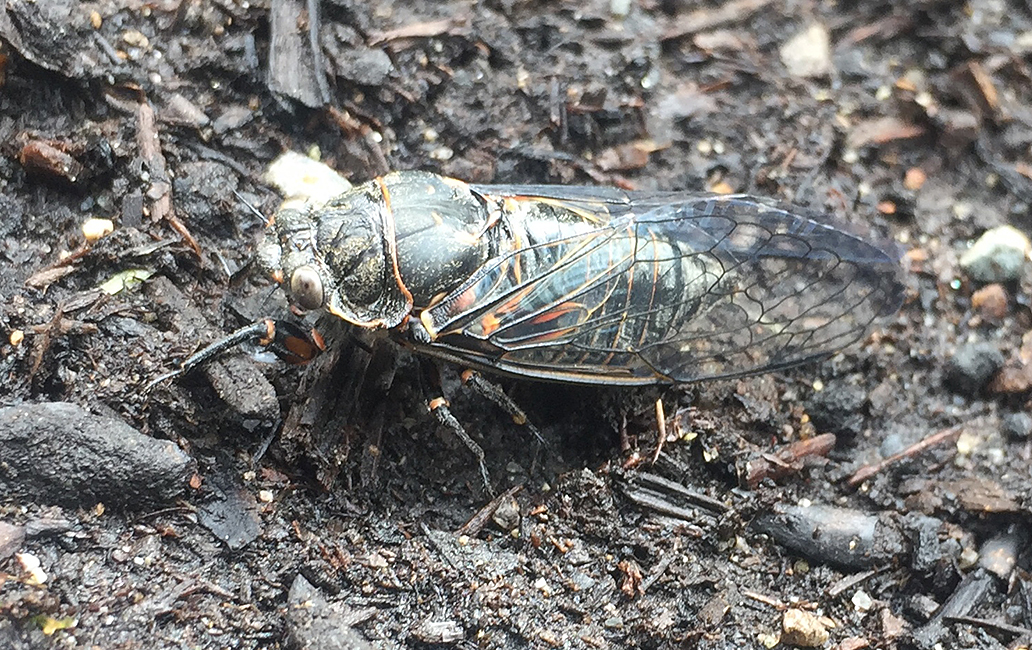
A large cicada – probably the Mountain Cicada (Okanogana bella). Cicada’s do not emerge from their underground larval stage every year. Perhaps 2020 will be a good year for seeing cicadas? Photo: ©Jennifer Newton
Want to learn more about cicadas? Here is a fun website: Cicada Mania
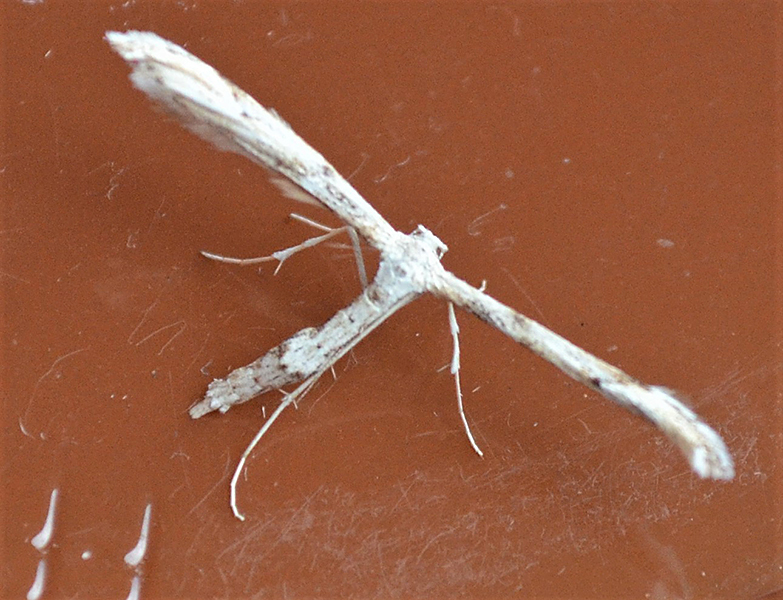
This Plume Moth (Oidaematophorus mathewianus) looks as though someone has lopped off its head. Certainly an unusual looking insect. Photo: ©Bob Scafe
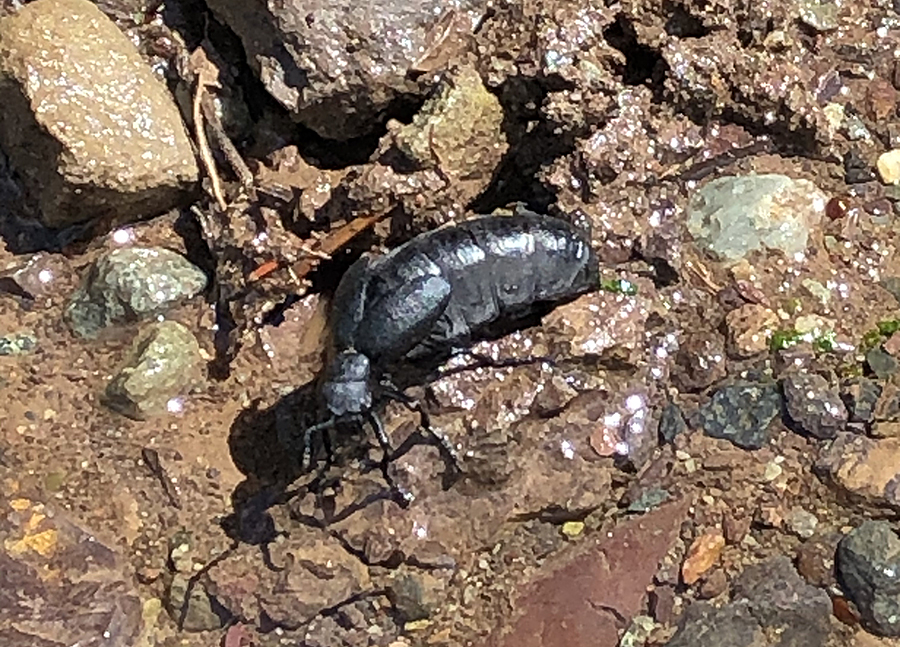
A large beetle, possibly a Blister Beetle (Family Meloidae). Blister beetles give off a nasty chemical, cantharadin, if handled or threatened, which can cause blisters on human skin. Photo: ©Shelley Cressy-Hassel
Swallowtail butterflies are some of our most impressive insects. Large and boldly coloured they are hard to miss. Here in southern BC we get several species and the photos sent in included three different species – all beautiful to see.
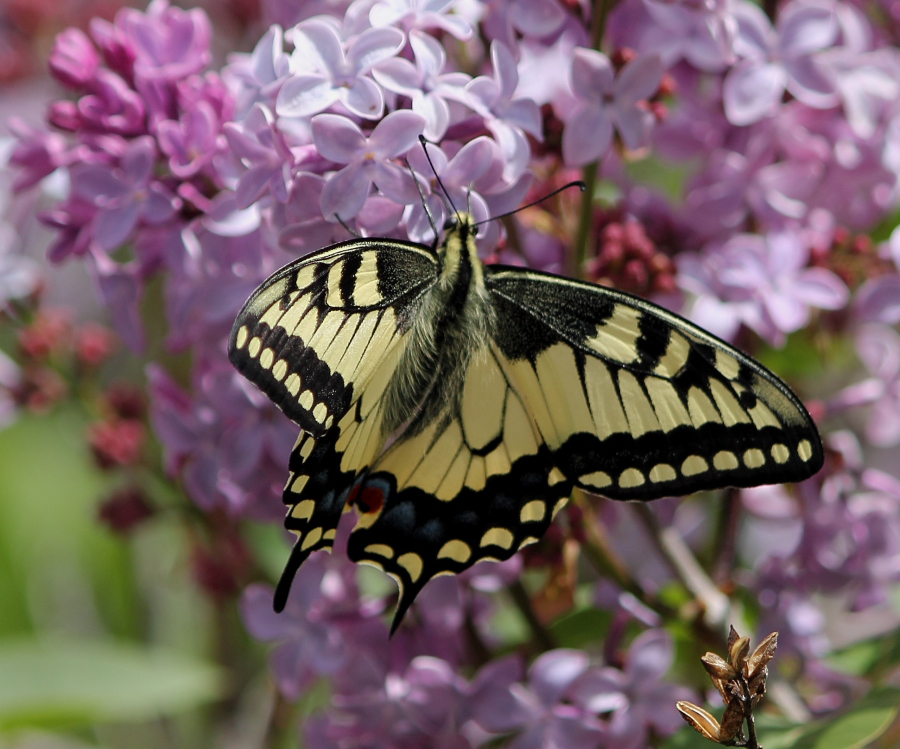
Old World Swallowtail butterfly (Papilio machaon). The English name reflects this species’ distribution – although it is a native species here it is also found in Europe and Asia. Photo: ©Cindilla Trent
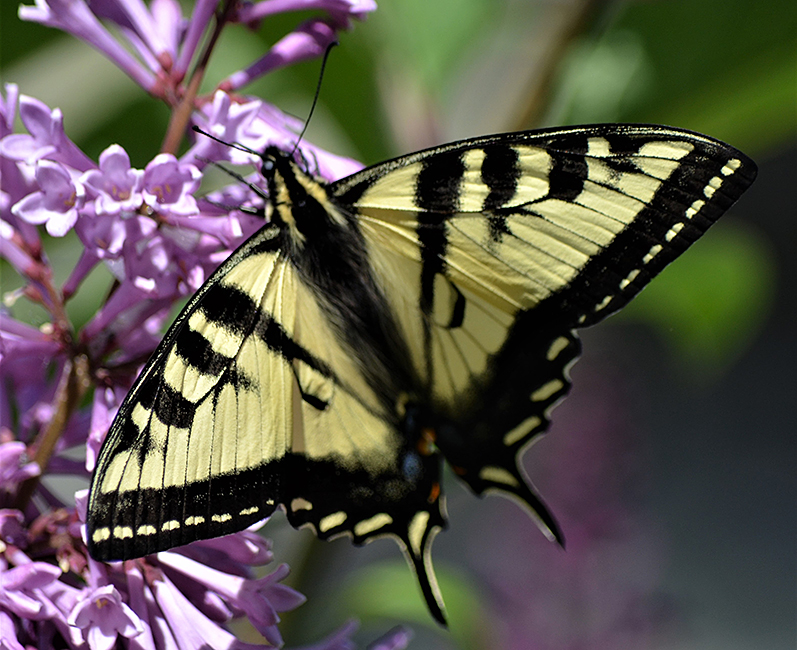
Western Tiger Swallowtail (Papilio rutulus). Found in the southern third of BC it is a fairly common species here. Photo: ©Bob Scafe
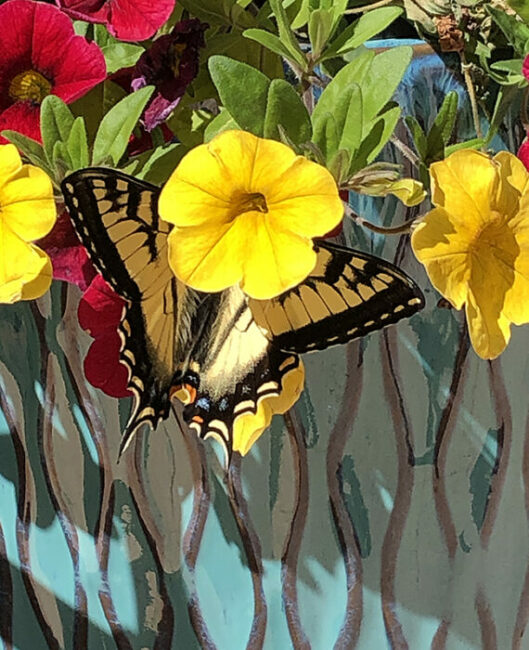
Wow! A kaleidoscope of colour and in the midst is yet another type of swallowtail – this is the Canadian Tiger Swallowtail (Papilio canadensis). It has a more northerly range than the previous two species. Photo: ©Shelley Cressy-Hassel.
A few more of our colourful wildflowers …..
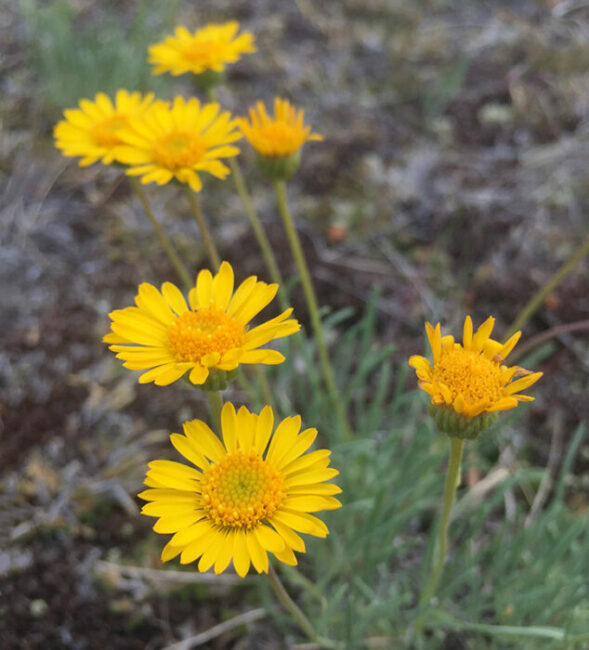
A lovely cluster of Golden Fleabane – also known as Golden Aster (Heterotheca villosa). This is one of many daisy-like flowers that bloom in summer in our area. Photo: ©Jennifer Newton
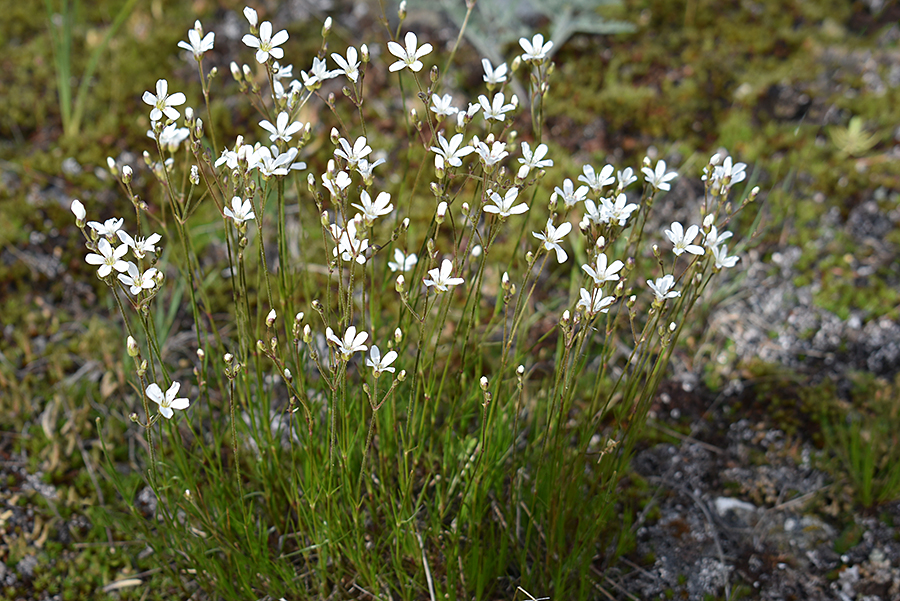
Thread-leaved Sandwort (Arenaria capillaris). Can be found in drier areas like sagebrush or rocky slopes. Photo: ©Martin Ince
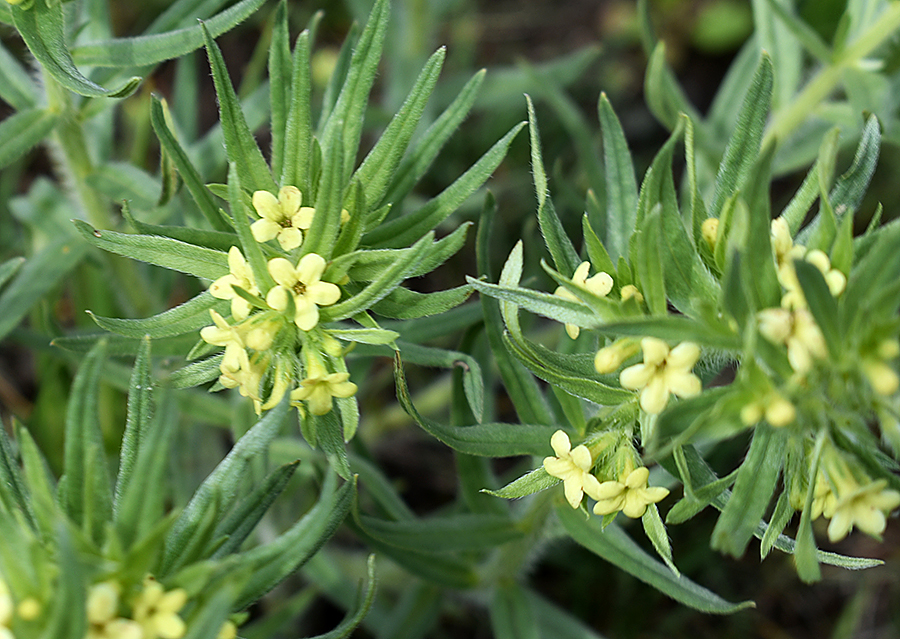
Lemonweed (Lithospermum ruderale) is a widespead perennial in grasslands, open forests and rocky areas. Photo: ©Martin Ince
Backyard feeders often attract a different set of avian customers in summer than in winter. Here are a few birds that are absent in winter but you might see them at your feeder from spring through fall.
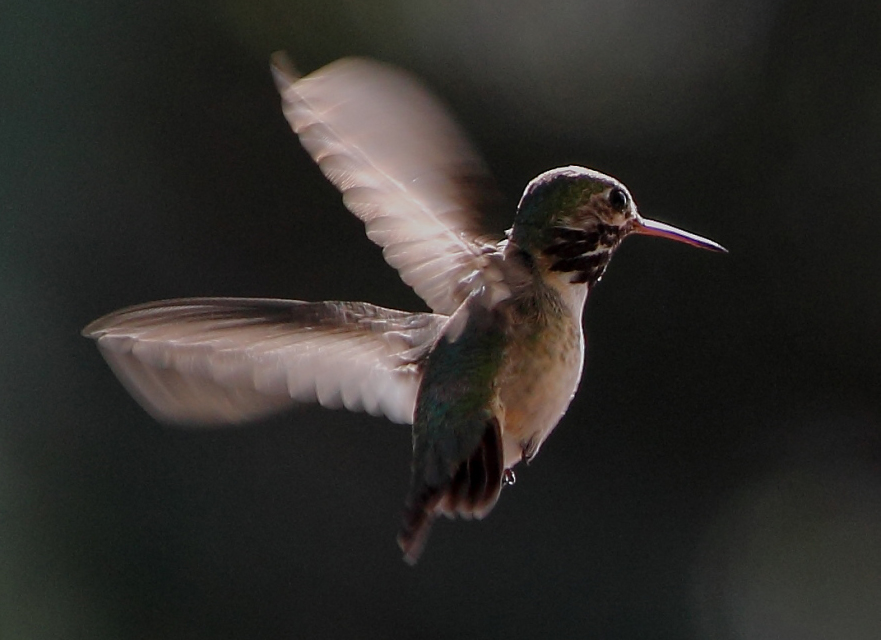
An action shot of a male Calliope Hummingbird. This is North America’s smallest bird. In our area it is our second-most common hummingbird, after the Rufous. Photo: ©Cindilla Trent
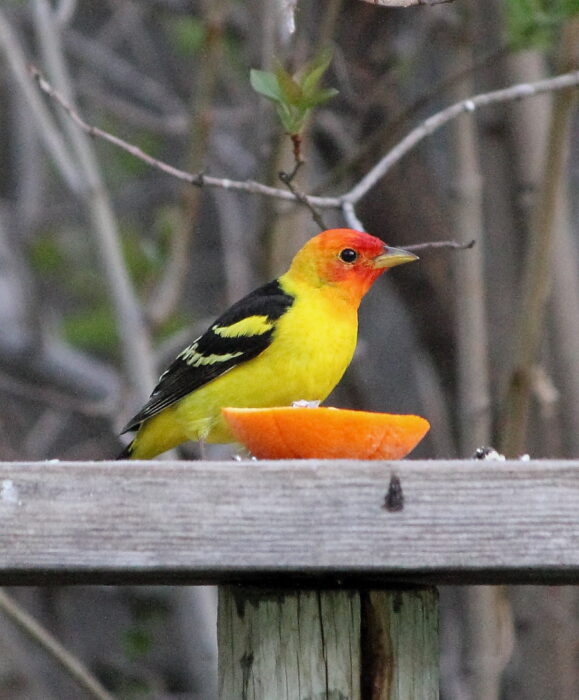
A male Western Tanager eating orange at a backyard feeding station. Tanagers have a diverse diet of insects and berries in our area but love exotic fruit too. Photo: ©Cindilla Trent
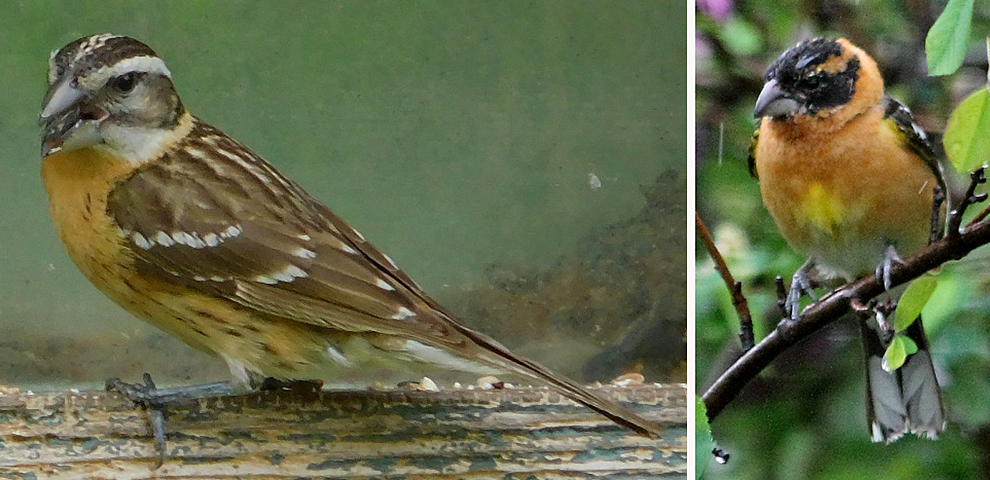
Black-headed Grosbeak – female on the left, male right. An uncommon bird in our area, it is more closely related to tanagers than to our common Evening Grosbeaks, but shares the name because both species have hefty beaks. Photos: ©Cindilla Trent
Away from feeders there are still plenty of species to see in your backyard, as you follow the anti-COVID lockdown and spacing guidelines. Here are some fairly common garden birds.
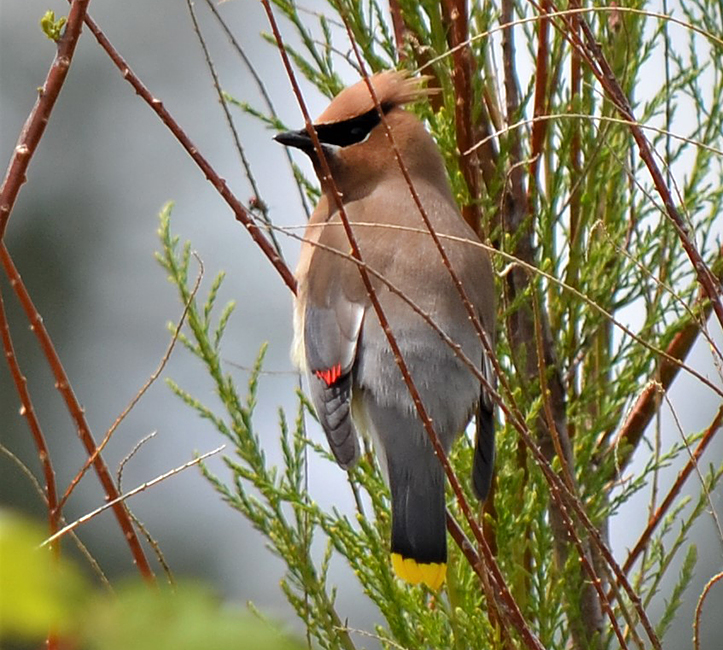
Cedar Waxwings arrive in late spring, usually some weeks after the wintering Bohemian Waxwings have departed for the north. They are often in flocks of 5, 10, 20 or even more. This photo nicely shows the red waxy-looking feather tips that give these birds their name. Photo: ©Bob Scafe
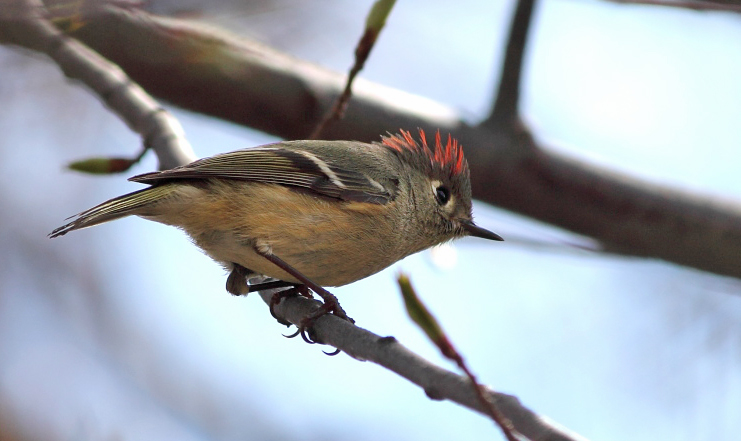
Something has excited this Ruby-crowned Kinglet. Normally the ruby crown is not as conspicuous, but here it is raised and obvious. Perhaps a potential mate is near, or a territorial rival? Photo: ©Cindilla Trent.
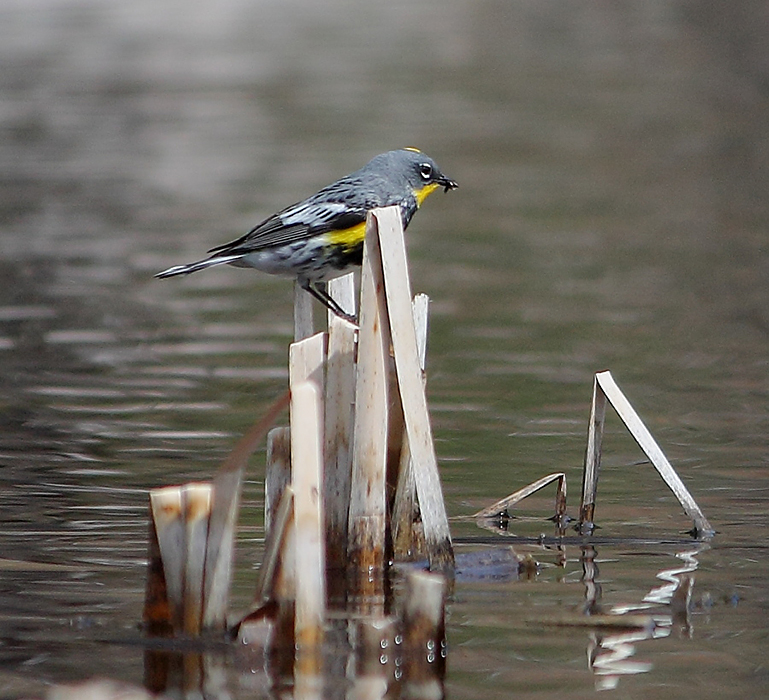
Our most common warbler, the Yellow-rumped Warbler is found in a range of habitats – forests, shrubs , gardens and, as here, the edges of wetlands. Photo: ©Vic Newton
Spring and early summer are also important times for amphibians and reptiles. Dormant for many winter months they have a short season to find food and reproduce.
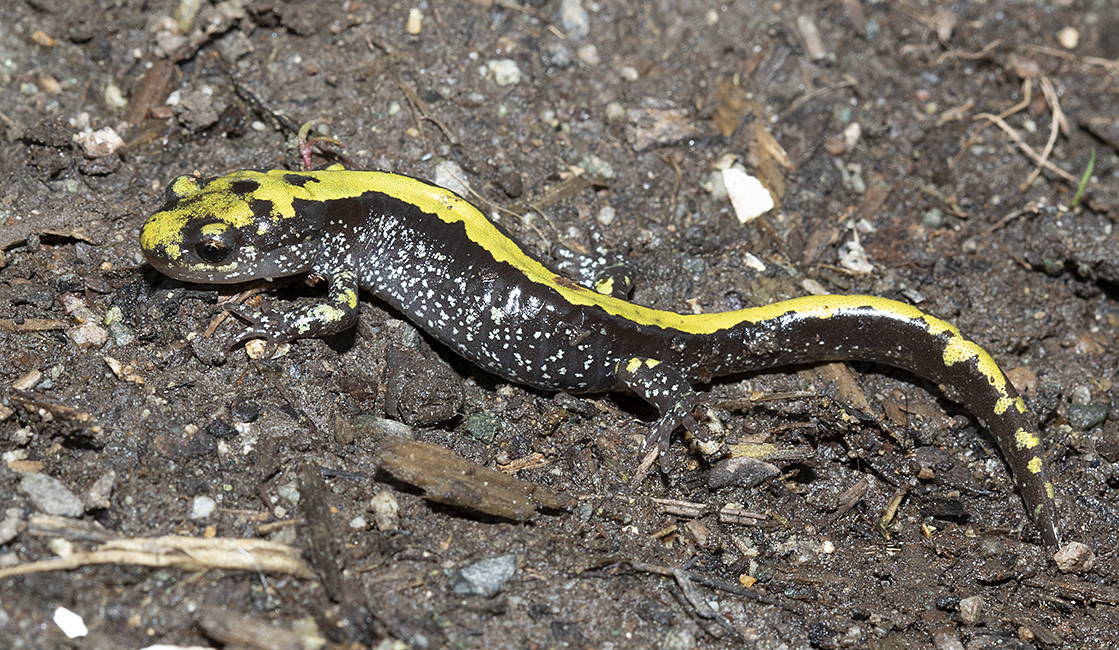
The Long-toed Salamander is the only salamander found in the Nicola Valley area. This one was living in some rotten logs in a Logan Lake backyard. Photo: ©Alan Burger
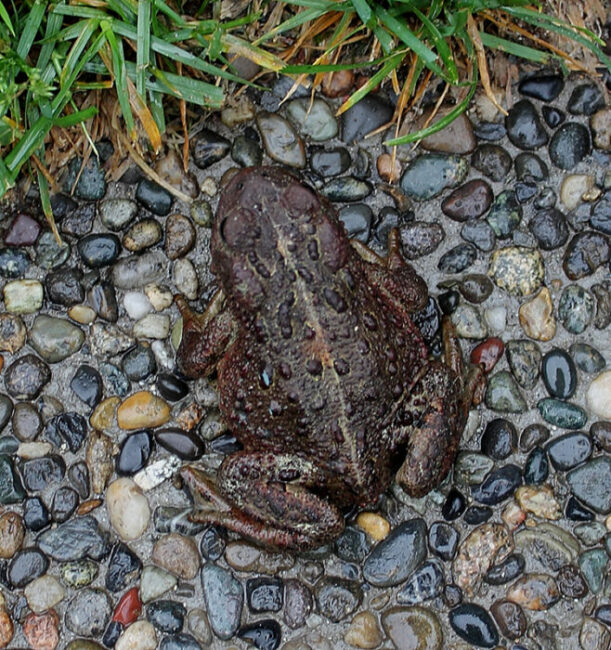
A Western Toad camouflaged against a pebbly background. This chunky amphibian is quite common in our area. Photo: ©Cindilla Trent
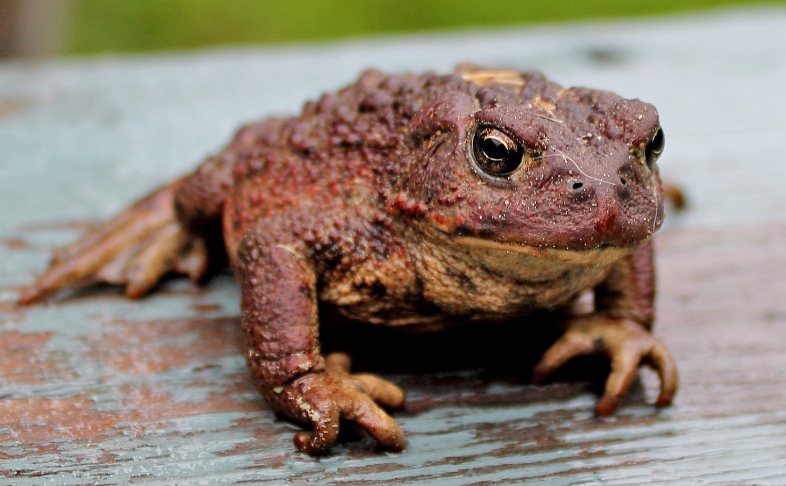
Another view of a Western Toad. They can be quite variable in colour – green, brownish, grey. Photo: ©Cindilla Trent
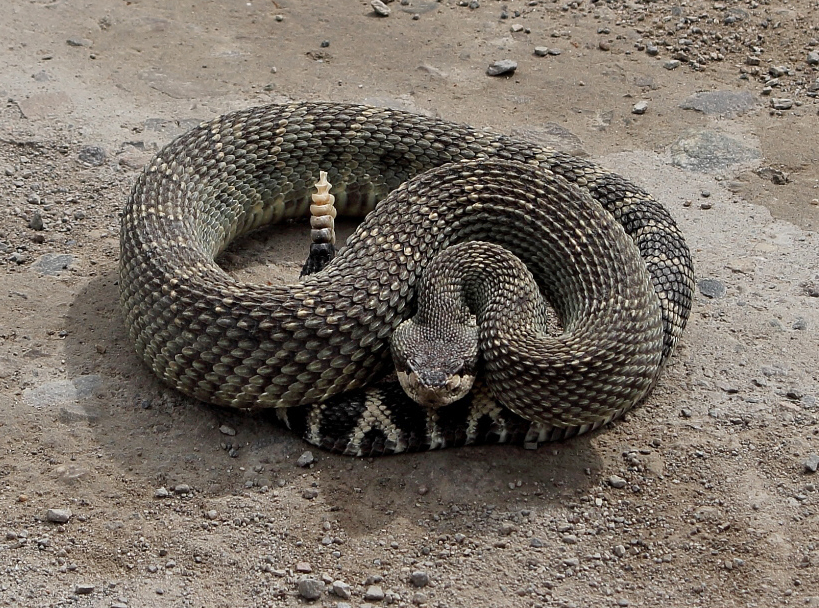
A Western Rattlesnake. This photo was taken in the Okanagan but rattlesnakes do occur in our area in the warmer parts of the lower Nicola Valley towards Spences Bridge. Photo: ©Cindilla Trent
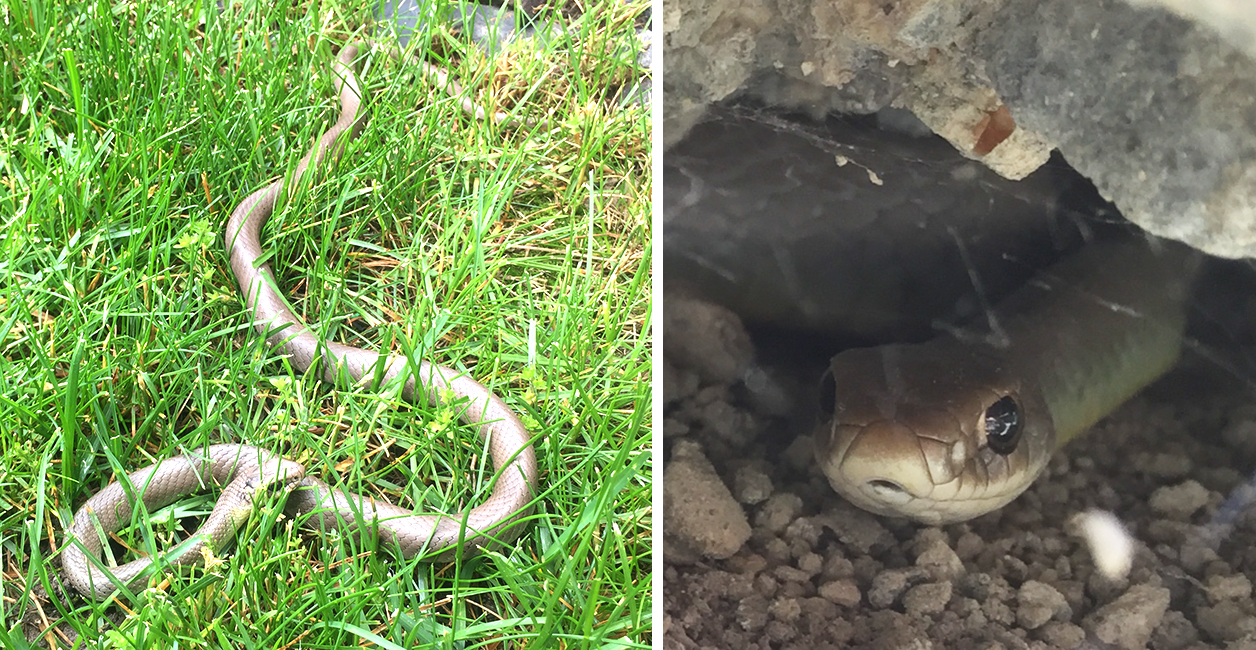
One of the longest and fastest snakes in BC, the Racer deserves its name. Usually one just sees a slim wiggle disappearing in the grass. Photos: ©Jennifer Newton
Time for some mammals ……..
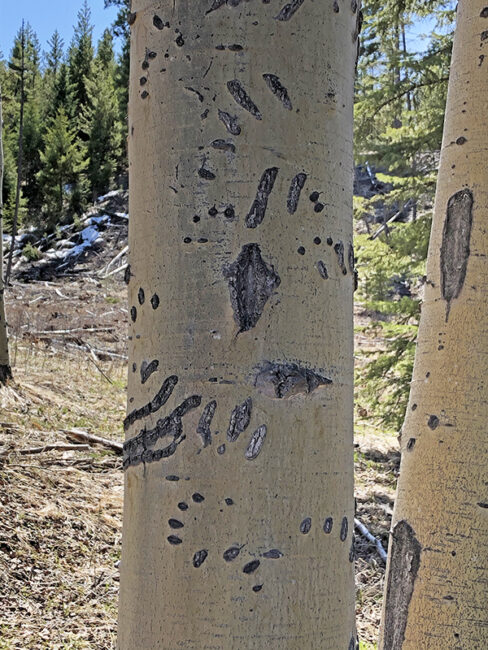
Bear sign. Looks like this aspen was climbed by both an adult bear and a cub. Photo: ©Shelley Cressy-Hassel
More local wildflowers …..
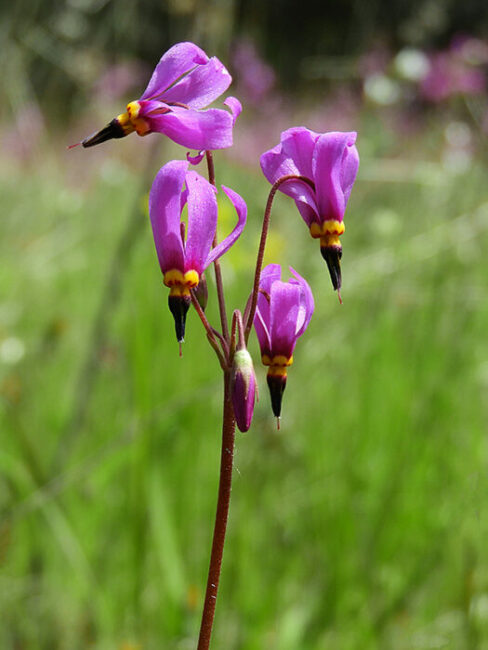
In spring, damp open meadows can be covered with Few-flowered Shooting Stars (Dodecathion pulchellum). Photo: ©Alan Burger
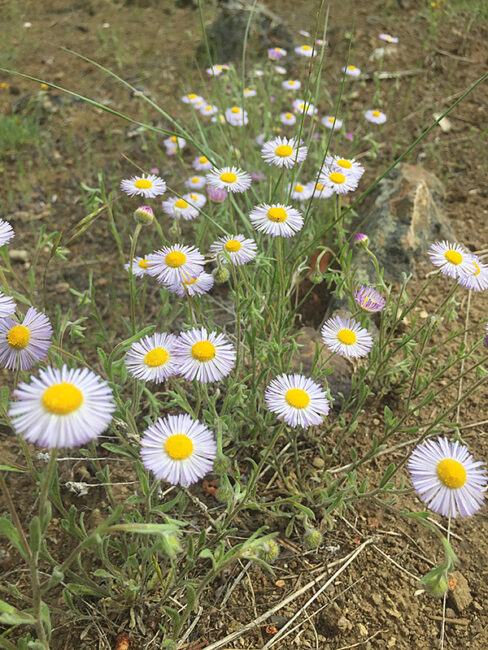
Showy Daisy (Fleabane) (Erigeron speciosus) – a widespread daisy in our area. A similar species occurs in alpine areas, blooming much later in summer. Photo: ©Jennifer Newton
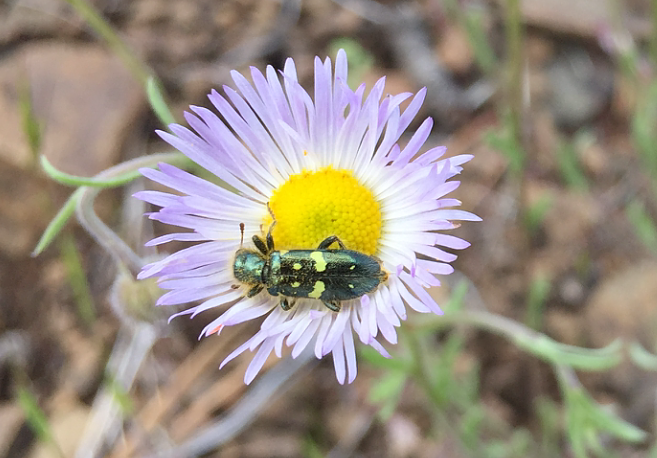
An unidentified beetle snacking on pollen or nectar on a Showy Daisy flower. Photo: ©Jennifer Newton
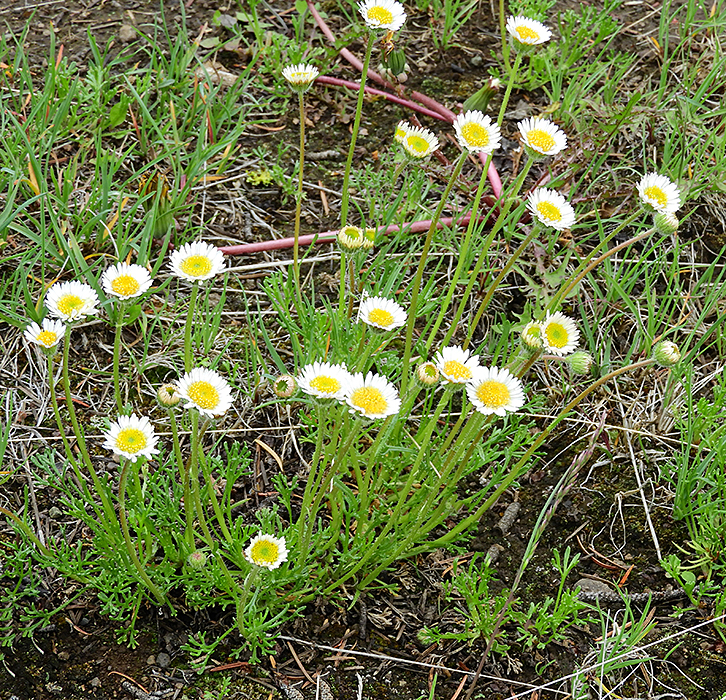
Cut-leaved Daisy (Erigeron compositus) – another widespread daisy in our area. The white petals shrivel leaving rounded yellowish pods where the seeds develop. Photo: ©Alan Burger
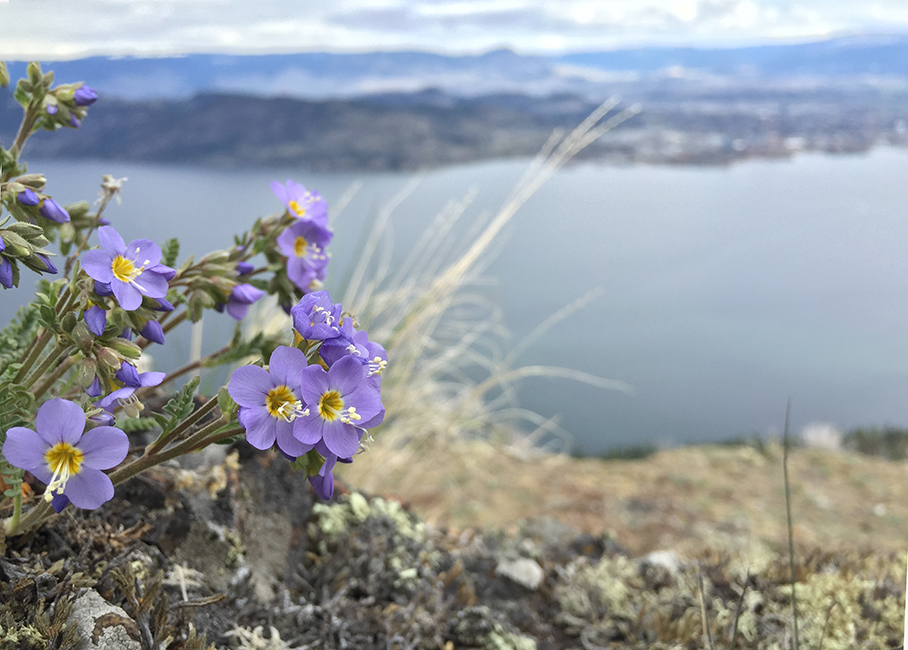
Showy Jacobs-ladder (Polemonium pulcherrimum). This beauty blooms in late spring in low elevations but as late as August in alpine areas. Photo: ©Jennifer Newton
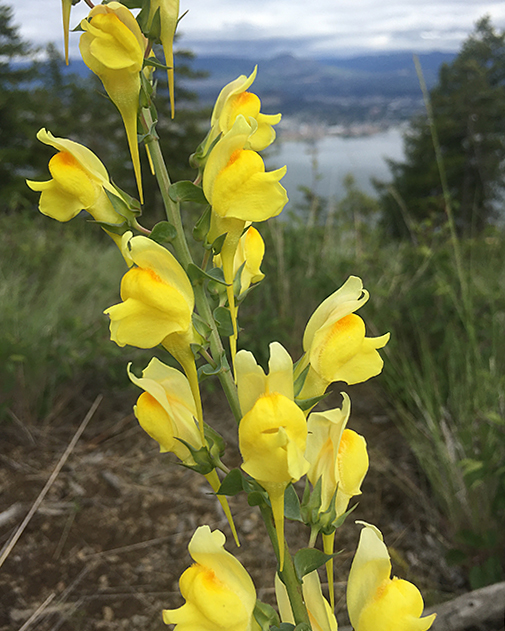
Beautiful – but a serious pest. Dalmatian Toadflax (Linaria genisfolia) is spreading in the Nicola Valley, much to the concern of ranchers and range managers. Introduced from Europe, it thrives on roadsides and other disturbed sites. Photo: ©Jennifer Newton
We’ll wrap this edition up with a few more local birds …..
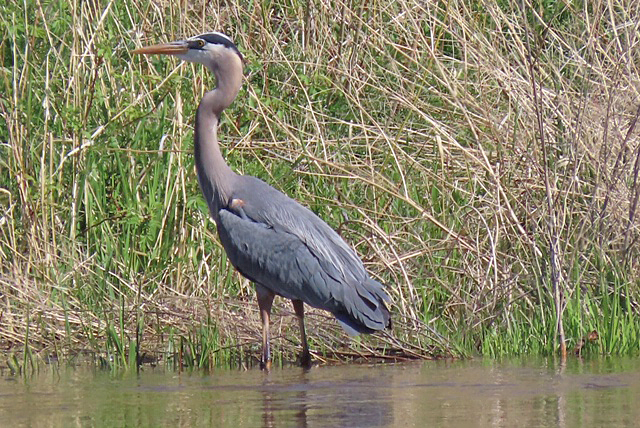
Great Blue Herons are the only herons usually found in the Nicola Valley. Fish are their primary prey, but they also take aquatic insects and even voles and mice. Photo: ©Vic Newton
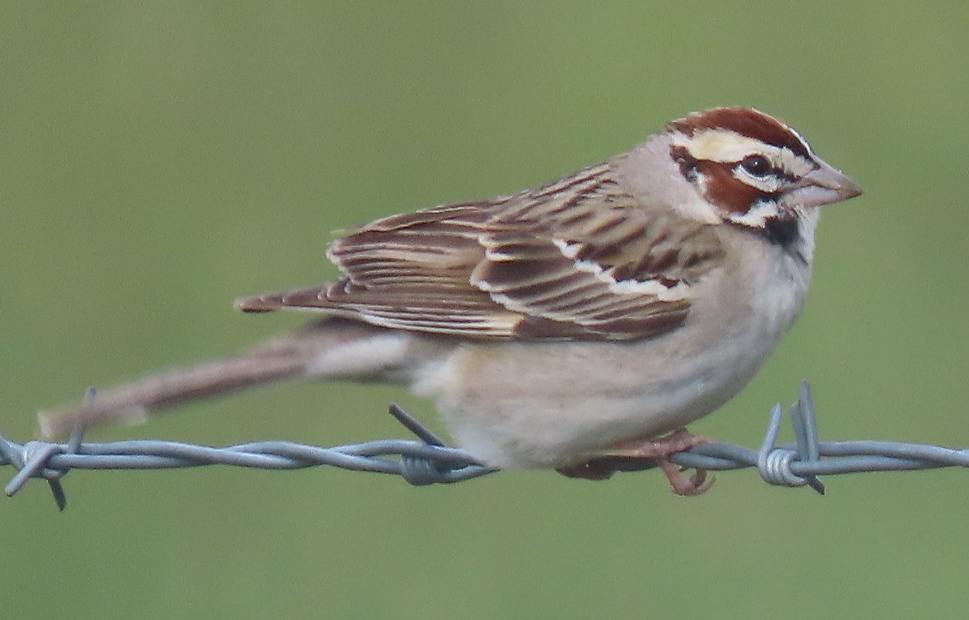
Not all sparrows are dull and nondescript. The Lark Sparrow is quite rare in our area, but a delight to find with its bright markings and lovely song. Photo: ©Vic Newton.

